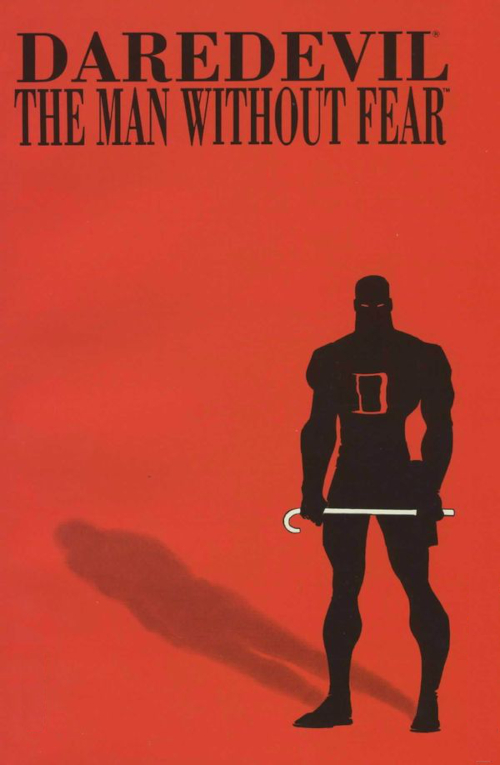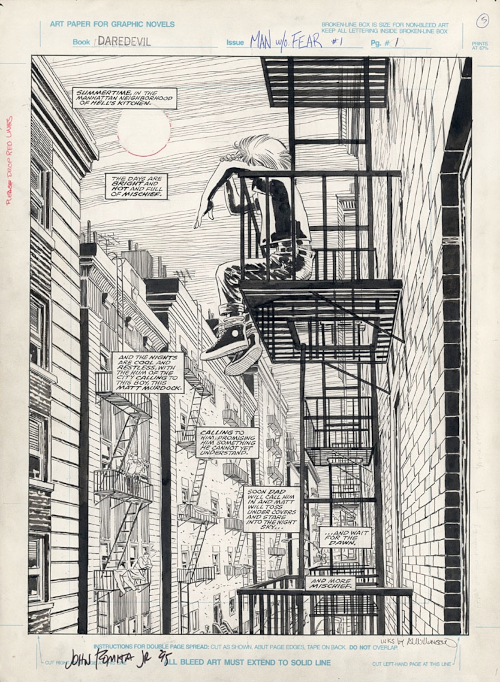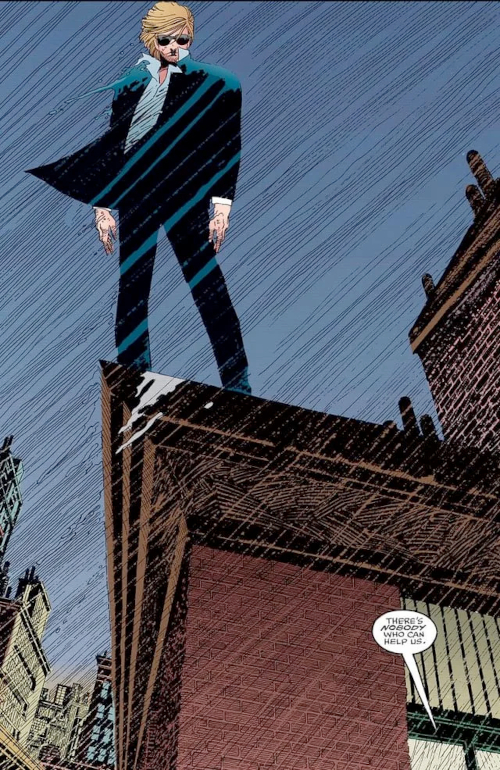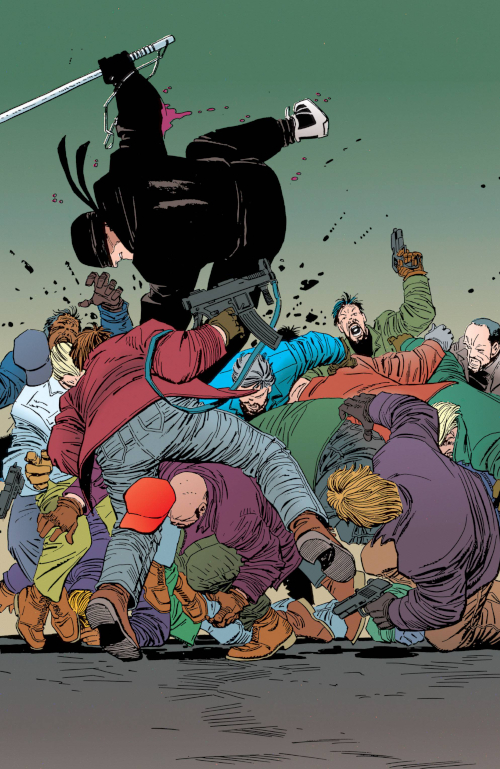Daredevil The Man Without Fear is a special comic for me. Released in 1993-1994, I first read it at the formative age of 15, and found myself relating to the adolescent melodrama and bone crushing action; but as I’ve gone back to reread over the ensuing years, my enjoyment of the comic has only grown. The comic’s creators (writer Frank Miller and artist John Romita Jr) both had previous history with blind lawyer Matt Murdock and his quick-fisted alter-ego Daredevil, and it’s clear they intended this to be a definitive work for the character.

First and foremost, this is an origin in slow motion. Miller’s other famous origin tale, the seminal Batman Year One, took place over the course of 12 months, whereas Daredevil’s origin here spans an entire decade in the life of Murdock; from his early teens causing mischief on the streets of Hell’s Kitchen, to his return to New York in his mid-twenties as a qualified and practising lawyer. There was no one single event which set Matt on his trajectory as costumed crimefighter; instead this is the coming of age story of a young man gradually finding the path to his greater destiny. It’s a tale of trauma and recovery, and of sinning and redemption; where the main obstacle that the hero has to overcome is himself.

The story splits into 3 fairly distinct acts; the first section covers Matt’s childhood in the Hell’s Kitchen neighbourhood of Manhattan in the 1970’s, and Romita Jr’s artwork goes a long way to selling the legitimacy of the setting. It’s worth noting that John Romita Sr was one of the initial artists on the early Daredevil issues in 1964-65, and Romita Jr will have been heavily inspired by seeing his father poring hours of work into these pages. Romita Jr has also admitted that his Italian-American extended family have heavily influenced his character design of the City’s criminal population, and there is an air of authenticity to the supporting cast here that few other artists have matched. Coupled with a highly descriptive narrative voice from Miller, and the resulting pages have a Taxi Driver style grit to them.

The second act of the story is admittedly the weakest, with a strong whiff of adolescent wish fulfilment to it. Here, Matt is maturing into a promising law student, and his sexual awakening is triggered by a fiery but brief affair with a mysterious femme fatale named Elektra Natchos. As a younger reader, I was desperately invested in Matt’s lifestyle as an enigmatic but tortured student that his fellow female students secretly fawned over; as an adult I can see that this characterisation was a bit clunky. Nevertheless, it is refreshing to see the representation of a mainstream male superhero as sexy. Batman and Superman are not generally seen in their own comics strutting around in their underpants, because they are largely supposed to be sexless dispensers of justice. By contrast, Matt Murdock is a steaming hot pin-up, that men want to be and ladies want to be with.

The final act provides the action-packed climax that many would expect from a superhero origin, although it’s kept grounded by relatively low stakes and a stubborn refusal to feature any traditional costumed characters. Miller’s plot very carefully and deliberately unfolds a scenario in which an innocent girl is placed in mortal danger from a child trafficking ring in Manhattan, and with time quickly running out, her only hope of rescue depends on Matt finally facing up to the guilt of his past, and battling through a small army of the City’s gangsters to get to her. Here it becomes clear that violence is the key theme of the whole story; in the first act Matt used violence for revenge, in the second act we see violence being enacted for enjoyment, and finally Matt makes the choice to use violence for a righteous cause, the protection of the innocent.

A superhero story that somehow avoids all the traditional tropes, and still delivers a thrillingly escapist yarn. Much like it’s handicapped hero, The Man Without Fear turns it’s limitations into strengths, and 30 years after initial publication, is still an absolute knockout.

